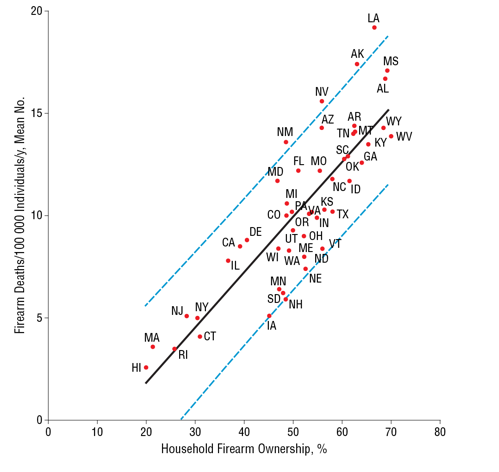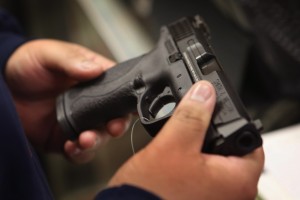In a new review, researchers from Harvard and Boston Children's Hospital crunched the numbers looking at firearm-related fatalities and firearm legislation across the U.S. Their conclusion: more laws in a state are associated with fewer deaths, across the board -- as well as for homicides and suicides individually.
The researchers worked with the Brady Center to Prevent Gun Violence to calculate "legislative strength scores." The center weights laws according to such factors as background checks on gun sales, permit-to-purchase requirements, and limiting handgun purchases to one a month.
The writers stress their study could not determine cause and effect, and more research is needed.
How many gun laws are there, overall? That's hard to determine, too, say the authors. From the study:
It is challenging to calculate the exact number of firearm laws: a single law may have multiple parts; laws are potentially passed at the national, state, county, and city level; and there is no repository available for tallying these laws.5 The factoid that there are “20 000 laws governing firearms”5 has been erroneously quoted since 1965, but the most recent and reliable estimate, performed in 1999, counted about 300 state firearm laws.6
Here's a chart from the study showing the association between household firearm ownership and firearm deaths. For you non-statisticians out there, focus on the black line:

The researchers also include statistics on firearm deaths for 2010:
- 16,259 total homicides, 68 percent by firearms -- or 11,056 firearm-related homicides
- 38,364 total suicides, 51 percent by firearms -- 19,566 firearm-related suicides
Learn More:
